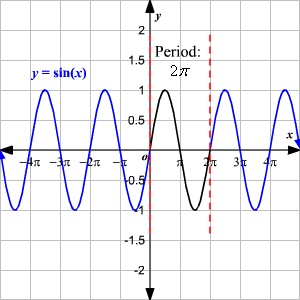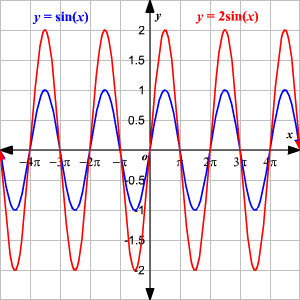Graphing Sine Function
The trigonometric ratios can also be considered as functions of a variable which is the measure of an angle. This angle measure can either be given in degrees or radians . Here, we will use radians.
The graph of a sine function is looks like this:

Properties of the Sine Function,
Domain :
Range : or
-intercept : , where is an integer.
Period:
Continuity: continuous on
Symmetry: origin (odd function)
The maximum value of occurs when , where is an integer.
The minimum value of occurs when , where is an integer.
Amplitude and Period of a Since Function
The amplitude of the graph of is the amount by which it varies above and below the -axis.
Amplitude = | |
The period of a sine function is the length of the shortest interval on the -axis over which the graph repeats.
Period =
Example:
Sketch the graphs of and . Compare the graphs.
For the function , the graph has an amplitude . Since , the graph has a period of . Thus, it cycles once from to with one maximum of , and one minimum of .

Observe the graphs of and . Each has the same -intercepts, but has an amplitude that is twice the amplitude of .
Also see Trigonometric Functions .



